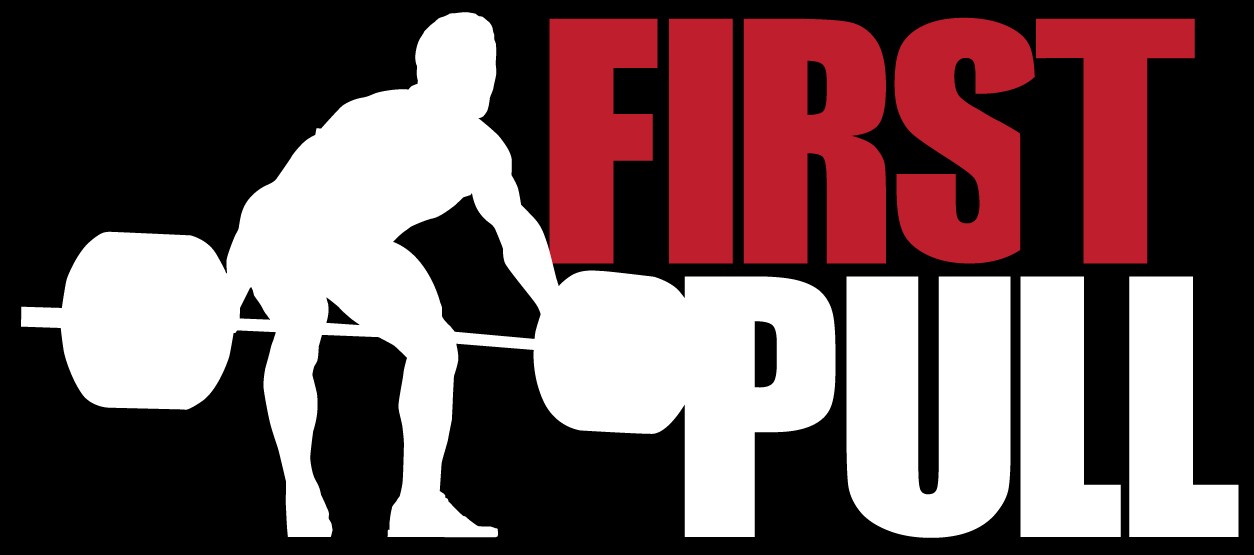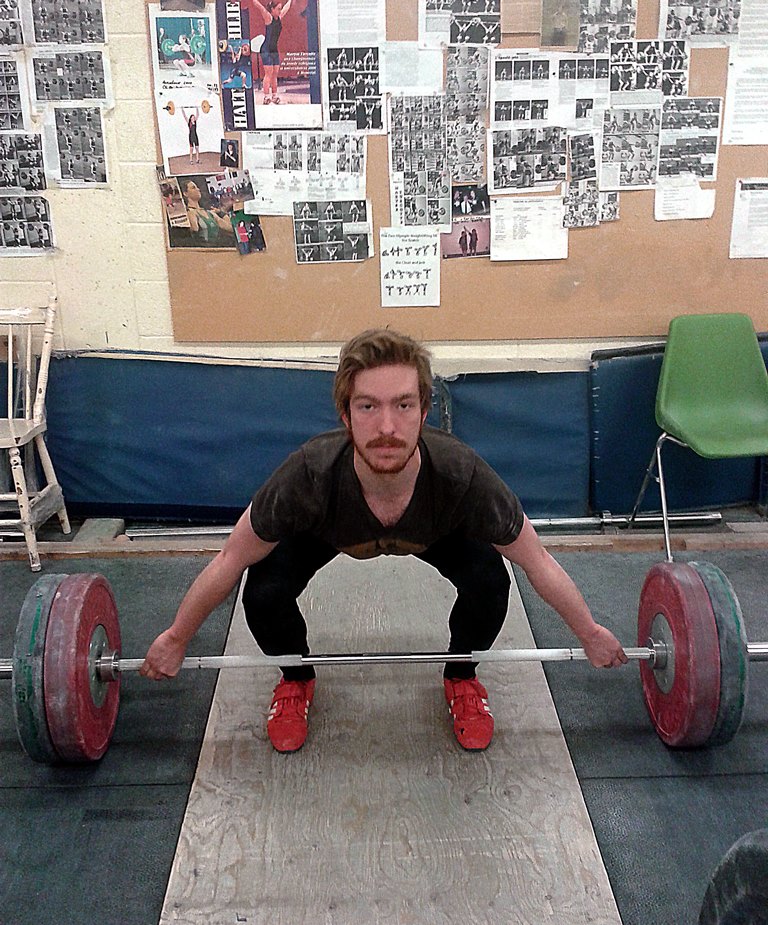 We have a great post for you guys today that’s PACKED full of information from Jean-Patrick Millette of FirstPull.Net. If you’re not familiar with Jean-Patrick he’s a young up and coming coach that has a great deal of information weightlifters and coaches alike will benefit from. Read
We have a great post for you guys today that’s PACKED full of information from Jean-Patrick Millette of FirstPull.Net. If you’re not familiar with Jean-Patrick he’s a young up and coming coach that has a great deal of information weightlifters and coaches alike will benefit from. Read
on and you’ll see.
*I didn’t want to water down Jean-Patrick’s responses so we broke the posts into x2 parts*
Let’s jump to it:
1) Fusion Weightlifting: I read your blog quite often and it’s very impressive how well you can convey your message on paper but also your coaching IQ. With that said, how did you get introduced to weightlifting and coaching?
Jean-Patrick: “Thank you! I have a rather odd story. Like many French Canadian kids, I grew up playing hockey and baseball. I dropped out of hockey around 8 years old so Baseball really was my first sport. As a pitcher, I was coached by the father of a kid on the team. Unfortunately, he did not have much knowledge of physical preparation and had me pitch too much.
I started having shoulder problems – which I still carry- not long after I stopped training in baseball. I throw as far as a 10 year old nowadays, and do so with pain. The positive in this is that I know what I will do and will not do when I coach kids at some point in my life.
As far as getting involved in weightlifting, it was a long process. I was always amazed by my father’s strength. Growing up, he told me stories of his feat of strength (or showed me). For instance, he told me that the first time he cleaned and pressed a dumbbell at 16 years old (no training experience, but some farm work), he did so with a 100lbs dumbbell. Three weeks or so into his training, he could do it for 10 times with each arm. He used to pick up heavy stuff to impress me all the time.
Around 12 years old, I became aware of weightlifting and I wanted to get into it. My mother was not found of the idea and there were no where to start anyways. However, I was fully aware of who Alekseyev was and later found out about Maryse Turcotte as well. Even today people tend to know about the Russian Bear because of his participation at the 1976 Olympics in Montreal.
I got involved in other sports but nothing was ever as cool and fascinating as weightlifting. I bought my first Olympic style weightlifting book at around 17-18 years old I believe. I still could not train and could only start at the beginning of my twenties. I am an average lifter because of my late start and my shoulder (that’s my excuse, hehe 😉 . I’m fine with that, though. I think it is an amazing sport and I don’t plan on quitting training anytime soon.
As far as coaching goes, I am a new kid around the block and I am slowly building something that will work. Over the years, I have gathered a lot of knowledge through interaction with many coaches and athletes, through my studies (bachelor in Kinesiology) and through reading peer reviewed articles and lifting resources. I understand exercise physiology, biomechanics and anatomy, as well as sport training (physical preparation) pretty well and that’s what I have been sharing on First Pull.
I am a new comer who has to prove himself and start producing elite athletes. That’s okay, because I have the hunger to do so. Producing high level athletes is a process that takes time if you do it correctly, but everything seems to be set so I can do it. That being said, I now have 10 regular athletes (+ consult for others) and they are progressing nicely. I got involved in coaching because I always wanted to work with athletes (that’s why I studied Kinesiology) and because I felt that I had everything you need to do it. I believe that I am a much better ‘’coach’’ than I am an athlete.”
2) Fusion Weightlifting: What is your general philosophy on developing a weightlifter?
Jean-Patrick: “I think that the initial year should be all about developing interest, technique, mobility, and strength (In that particular order). If you are going to have them compete in the first year, make it fun because all new lifters are scared of their first competition. What happens there will dictate if they stay or not in the sport. I don’t push competitions in the first year personally (But I talk about it).
As soon as a lifter can do a full lift, people have a tendency of pushing too fast. Unless they are competing or a PR day is planned, I believe beginners should never miss a bar.
I have my intermediate lifters hit 90%+ once a week and schedule a Test/PR day once every 3-4 weeks. My rationale is that if you want to do well at your exam, you have to study carefully. Getting an A+ may require you to study for 3-4 weeks whereas getting a B can be done by studying for a week. Weightlifting is similar, the study periods get longer.
As they progress, the intensity will grow. At the beginning, we add sets rather than weights. Once they do a certain number of sets, we back off and add weights and do the same. It’s a very general and basic way of programming but it allows for a lot of flexibility and it builds a base that is required for the years to come. No base, no eliteness.”
3) Fusion Weightlifting: When a weightlifter starts with you, what should they expect from your coaching style?
Jean-Patrick: “I am very technical right off the bat and take my time. For instance, I am involved in coaching a male lifter that injured his hamstring before he started with me. In two months, he is back to about 85-90% of his max lifts, but the pain is gone. I can count on my fingers the number of bars he has missed. His technique has changed drastically and I believe that he will do 100-130 within two months. He has PRed his squat in the process as well. I take it slow in term of intensity and make sure the base is good enough to hold further training. I would have liked that of my baseball coach.
I am very dedicated to my lifters and care a lot about their progress and them staying injury free. Workouts are individualized according to their individual weaknesses. They know I actively coach – not just look at their lifts.
I have my cons as well. I don’t tolerate missed trainings very well. I am always polite about it, I don’t like when they miss because I want them to reach their goals. I am a little bit annoying about the filming as well. My rationale is that I don’t want them to obsess over a lift all night long after training. That being said, filming is their choice.”
4) Fusion Weightlifting: How do you assess the needs of your weightlifters and balance programming ratios for the lifts and their accessories through the annual program?
Jean-Patrick: “As far as ratios go, when working with someone that starts with me but has experience, the first question I ask is how much do you snatch and clean and jerk and make a ratio out of it. I am looking for 80% SN/CJ. If it’s lower, then I know I will have to prioritize the SN. If it’s higher, I inquire about the reason(s) the CJ is ‘’low’’. If they miss clean and jerks due to the clean, I know I have to have them work on the clean more. If it is due to the jerk, then we have to work on the jerk (only if its technique related, since some lifters miss due to poor cleans).
The second question I ask is what are their strength PRs (squat and pull). I aim for a squat to pull ratio of around 90%. I expect most to pull more than or as much as they squat, but this ratio is not as important and vary across body types. Next thing and more importantly, I aim for a squat to clean and jerk ratio of 120-130%. That gives me an idea of how to start a lifter. The next thing I do is I evaluate their technique by making them lift heavy and seek what makes their technique break down and go from them. I don’t buy into using a generic plan for everybody.
As far as my regular lifters are concerned, I use similar ratio to program accordingly. I also take into account other things like the reasons lifts are being missed, technique problems, training frequency, experience, etc. I program in blocks. Whatever they have too much of (their strength) goes into maintenance mode, and whatever they don’t have enough of (their weaknesses) goes into priority mode. Volume and intensity vary depending on where we are at in the training cycle.”
That’s it for today guys, part 2 will be up next week! In the mean time make sure to support and follow First Pull on:
Train smart,




